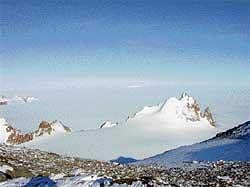

Come November and a team of eight Indians will embark on their lonely journey traversing 6,000 km of icy wilderness to reach the unexplored frontiers of the South Pole and come back. In the process, they are expected to collect some scientific data.
“More than science, the geopolitics of Antarctica is the driving force behind the South Pole mission,” a geologist who returned from Antarctica few months back told Deccan Herald.
The scientist, who does not wish to be named, said the mission was required to cover the grounds as nobody knew what kind of terms and conditions the developed nations would throw up once the 1959 Antarctica Treaty reopened for negotiations in 2040.
At the moment, no country can exploit the resources of Antarctica, which is considered as a common heritage of the mankind. But with the global population on the rise, a fierce battle on how to share its resources is likely after 2040. Antarctica holds 75 per cent of the world’s fresh water.
It also has enormous amount of natural resources such as fresh water, flora and fauna, minerals, oil and coal. The icy continent may have large deposits of minerals, oils (about 45,000 million barrels and roughly 115 trillion cubic feet of gas) and coal (about 11 per cent of the world’s total).
For a long time, India planned for a scientific mission to the South Pole. Four reconnaissance missions were made during 2nd, 3rd, 9th and 19th expeditions. After years of consultations, the government finally agreed for a South Pole mission.
“South Pole mission would not be an annual affair. At the moment it is only an one time event. We will decide on the future depending on its outcome,” Sailesh Nayak, secretary in the Union Ministry of Earth Sciences said here on Monday. The mission is likely to be formally announced on Tuesday. The mission will cost the Centre an additional Rs 3 crore.
